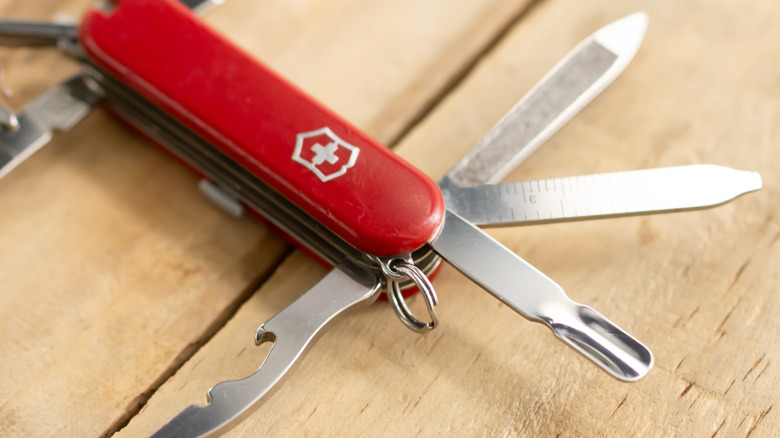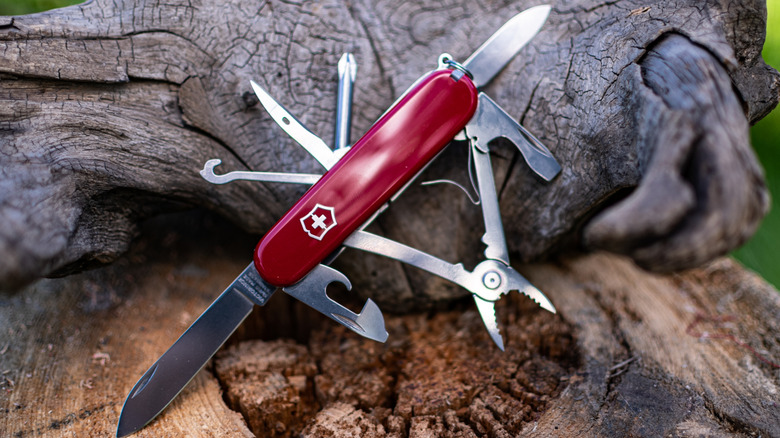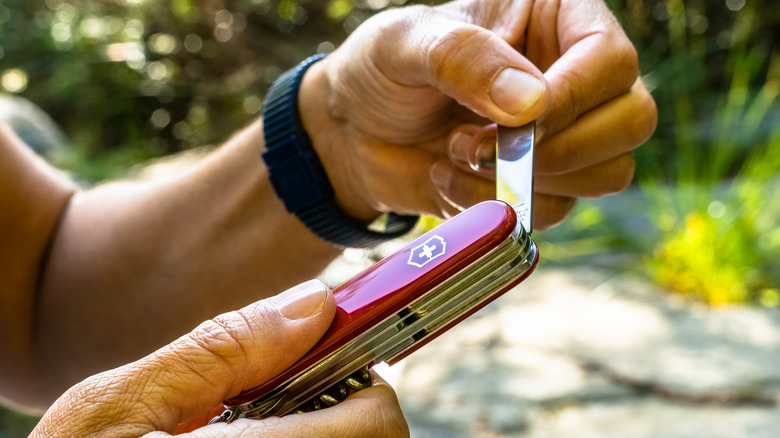Can You Use WD-40 On A Swiss Army Knife?
If you've owned a Swiss Army Knife for a while, chances are that your knife has seen a fair share of pocket lint, dust, and maybe even some peanut butter from your last camping trip. And if the tools start to stick or feel rough when opening, it's only natural to think about giving it a good clean and some lubrication. That's when a lot of people reach for something familiar — most likely a WD-40 multipurpose spray. But just because you can spray WD-40 on your Swiss Army Knife, does that mean you should?
The truth is, many people do not understand what WD-40 actually does. In reality, it's not a general-purpose lubricant like most people think. In fact, it was originally designed to displace water and prevent corrosion. And while it can loosen stuck parts, it's not ideal for the precision joints of a Swiss Army Knife. Instead of helping, it might end up causing more problems than it solves.
Why WD-40 might do more harm than good?
WD-40 is a thick, sticky product, and once applied, it doesn't just vanish. In fact, it can leave behind a residue that attracts even more dirt and muck. On a tool with tiny hinges and moving parts like a Swiss Army Knife, that's a good recipe for gunk build-up. Over time, the very thing you used to make your knife smoother can actually make it harder to use. But that's not all — the solvents in WD-40 aren't great for plastic parts either, and many Swiss Army Knives have plastic handles or accessories.
So, now the question is, what should you use instead? The answer lies with Victorinox, the maker of Swiss Army Knives, which actually sells its own multi-tool oil. This oil is made just for Swiss Army Knives and does a great job at protecting them from rust. It helps everything move smoothly, so your knife stays in good shape for years to come — something that WD-40 cannot promise at all. More importantly, unlike WD-40, the oil sold by Victorinox is food-safe and corrosion-resistant, which matters a lot if you're using your knife for outdoor cooking or small meal prep tasks.
How to properly clean and oil a Swiss Army Knife?
First things first — if your knife has a battery or electronic tools, remove them before cleaning. The same goes for removable parts like the toothpick, tweezers, or pen. These small items can be cleaned separately using warm, soapy water. If your knife is fully mechanical, it's safe to submerge the whole thing in warm water. Gently open and close each tool underwater to loosen dirt. A sponge or soft pad can help clean off stubborn spots, but avoid anything abrasive like steel wool or sandpaper.
Once clean, rinse it well and let it air dry with all tools open. This helps water escape from the small internal gaps. After the knife is fully dry, apply a drop or two of proper multi-tool oil to each joint. Open and close the tools a few times to spread the oil evenly. Lay down a rag or paper towel underneath to catch any drips. Victorinox's own oil is your safest bet, but the key is using something that does the job while being food-safe and doesn't leave behind a sticky mess.


